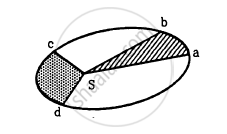Advertisements
Advertisements
प्रश्न
If the sun and the planets carried huge amounts of opposite charges ______.
- all three of Kepler’s laws would still be valid.
- only the third law will be valid.
- the second law will not change.
- the first law will still be valid.
उत्तर
a, c and d
Explanation:
Coulomb’s electric force or Electrostatic force of attraction will produce opposite charges.
If the sun and the planets carry a huge amount of opposite charges, then the electrostatic force of attraction will be large. Gravitational force is also attractive in nature have both forces will be added and both are radial in nature.
Both the forces obey inverse square law and are central forces. As both forces are of the same nature, hence all three of Kepler’s laws will be valid.
APPEARS IN
संबंधित प्रश्न
A comet orbits the Sun in a highly elliptical orbit. Does the comet have a constant (a) linear speed, (b) angular speed, (c) angular momentum, (d) kinetic energy, (e) potential energy, (f) total energy throughout its orbit? Neglect any mass loss of the comet when it comes very close to the Sun.
In the Following figure shows the elliptical path of a planet about the sun. The two shaded parts have equal area. If t1 and t2 be the time taken by the planet to go from a to b and from c to d respectively,

The square of its period of revolution around the sun is directly proportional to the _______ of the mean distance of a planet from the sun.
The third law of Kepler is also known as the Law of ______.
The mass and radius of earth is 'Me' and 'Re' respectively and that of moon is 'Mm' and 'Rm' respectively. The distance between the centre of the earth and that of moon is 'D'. The minimum speed required for a body (mass 'm') to project from a point midway between their centres to escape to infinity is ______.
In our solar system, the inter-planetary region has chunks of matter (much smaller in size compared to planets) called asteroids. They ______.
Draw areal velocity versus time graph for mars.
What is the direction of areal velocity of the earth around the sun?
A star like the sun has several bodies moving around it at different distances. Consider that all of them are moving in circular orbits. Let r be the distance of the body from the centre of the star and let its linear velocity be v, angular velocity ω, kinetic energy K, gravitational potential energy U, total energy E and angular momentum l. As the radius r of the orbit increases, determine which of the above quantities increase and which ones decrease.
The maximum and minimum distances of a comet from the Sun are 1.6 × 1012 m and 8.0 × 1010 m respectively. If the speed of the comet at the nearest point is 6 × 104 ms-1, the speed at the farthest point is ______.
